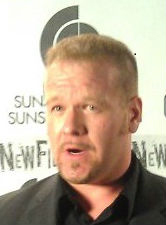InkTip Advice: Beat Sheets
42 movies were made through InkTip in 2015 alone!!! And hundreds more writers have sold/optioned their screenplays by having their scripts on InkTip.com.
Go here to sign up and list your scripts.
---
I got a call from a director the other day asking if I'd be willing to put a call out to our writers for scripts meeting some very specific criteria. I said, "Sure, what's the genre?" He replied, "Genre doesn't matter, I'll just email you a list."
And then he sent me the beat sheet below.
Let's make sure we're on the same page here. Beat sheets are basically checklists of story beats and other elements that should be in a script, and they're used by writers to develop new stories, producers and readers to evaluate submissions, and development execs who work together with writers on new projects. I've seen a lot of different beat sheets over the years and I've heard them called a lot of different things, but bottom line, they're used quite often, and some are better than others.
The television studio I used to work for had what they called their "MOW template," which was basically a USC-style stack of eight sequences with cliffhangers followed by a ninth act denouement. Another producer I worked with had a "to do list" of movements or sequences that had to be accomplished step-by-step, which was very similar to Blake Snyder's "Save the Cat" beat sheet but with genre beats from Truby's "Anatomy of Story," and the character and conflict points from McKee's "Story." Still, another producer I worked for once had a nine page "development outline" which I can't even begin to describe (because I signed a non-disclosure agreement promising not to do so), but which was the most sophisticated and elaborate beat sheet I've ever seen.
But the list this director sent me - which he got from his agent at a major agency - is my new favorite for a couple reasons. First, it covers all the major beats that need to be in a script (and which, if missing from a script, will often result in said script getting rejected), and second, it specifies where those beats need to be.
If you're re-writing a script or developing an entirely new one from scratch, this won't take your story to the page, but it will serve as an extremely convenient checklist or outline to reference as you structure or re-structure your story. And it's a good starting point in more ways than one; you can use it to develop a new story right now, or you can copy and paste it into a word doc and start adding things to it to develop your own private beat sheet.
Without notes, edits, or further ado, here's that list:
________________________________________
If the script meets 90% of these requirements then we are interested in reading it:
o 90% or more a single character's point of view through the entire script.
o The script needs to linearly ramp up in pressure, stakes, conflict, dilemmas etc. as it progresses through time.
o A 3-act structure, with act 2 broken in half with a midpoint turning point.
o Each act must be broken into 2-3 sequences.
o Each 3-4 scene sequence needs to ramp up in intensity from scene 1 through scene 3/4.
o A central question that drives the plot and hooks the audience must be setup in act 1.
o Each scene must contain at least 1 element, if not multiple: Conflict, suspense, action.
o Each scene must have a reveal of plot or character at the end.
o Each scene must forward the plot.
o The character's Dialog must make use of subtext.
o The characters must have some depth.
o The core of the script must be about a character, and his transformation, no matter how much action or suspense is layered on top.
o 1-10% into the script, setup main character's internal desire.
o 12%, call to action.
o 25%, inciting incident.
o 50% midpoint center of script, major turning point... things start going down hill.
o 75% into the script, everything goes to hell, nothing worked, all is lost.
o 95% final climax and reveal, payoff all of your setups.
o 100% denouement scene, show the character for 1 scene after the resolution.
________________________________________
Over 300 movies were made by producers who found writers on InkTip.
If you're already a writer using InkTip, go here to list your scripts.
If you haven't joined yet, sign up here.
 Jared Wynn
Jared Wynn
Questions? Comments? Connect with me on Linkedin!
http://pro.imdb.com/name/nm1340261/
http://www.linkedin.com/in/jaredwynn
Jared Wynn has interviewed thousands of producers, agents and managers about what they're looking for in a script or writer, and he knows a lot about how to successfully market a screenplay.
Contact InkTip
